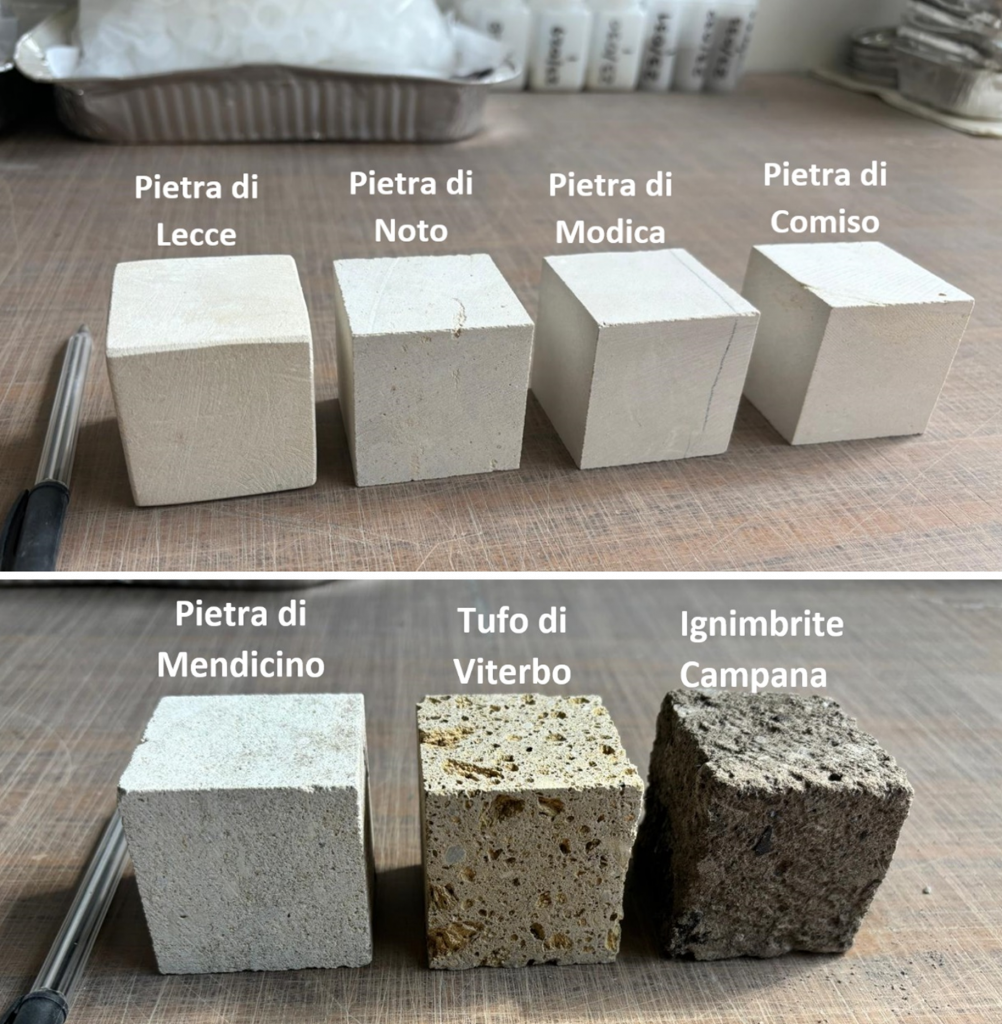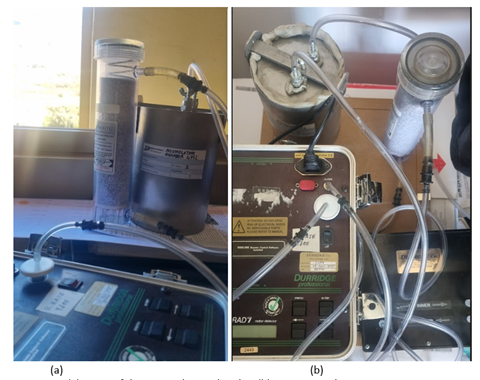RESEARCH
DETAILED PROJECT DESCRIPTION
Building materials contain naturally occurring radionuclides that can result in significant gamma-ray exposure and contribute to indoor radon concentrations. Gamma-emitting radionuclides typically lead to external exposure to ionising radiation, while radon gas, together with its short-lived decay products, induces internal exposure, which is highly dependent on the concentration of this radioactive gas in indoor environments. Considering that most people spend between 80% and 93% of their time indoors, indoor air quality is extremely important for healthy living. Although the assessment of natural radioactivity content in modern building materials has been extensively studied, there is currently a lack of knowledge about the radiological risk to humans due to external and internal exposure to ionising radiation in stone materials used for historical sites and monuments. Bearing in mind that building stones undergo various degradation and alteration processes with a rate of deterioration closely related to their mineralogical and chemical composition, texture and porous structure, it is reasonable to assume that radon exhalation from these materials is highly dependent on the specific type of weathering to which buildings and monuments are continuously exposed. In this context, the application of consolidants, already widely used to improve the performance of stones against such natural weathering mechanisms, could also lead to a change in the rate of radon exhalation. In this sense, for radiological as well as conservation purposes, it is crucial to determine the best conservation procedures to adopt in order to preserve the cultural heritage as long as possible, by identifying the most appropriate consolidating product that reduces radon exhalation while maintaining sufficient compatibility with the substrates. Knowledge of the aforementioned aspects would not only make it possible to ascertain the possible radiological risk to human health, but also to support the design of radiation protection measures in future restoration work.
To assess any possible radiological risk for the human beings related to outdoor exposure to gamma rays from building materials of interest in the field of cultural heritage.

The first milestone of the ATHENA project, to be achieved by the 16th month of the project (February 2025), is associated with the following deliverables:
Deliverable 1.1: Measurement of the specific activity of the naturally occurring radioactive elements, such as Ra-226, Th-232 and
K-40, contained in the investigated building materials by using High Purity Germanium (HPGe) gamma-ray spectrometry and
assessment of any possible radiological risk for the human beings through the calculation of the following indexes: activity
concentration index (I), alpha index (Iα), absorbed gamma dose rate (D), radium equivalent activity (Raeq), hazard indexes (Hin and
Hex), annual effective dose equivalent outdoor (AEDEout) and excess lifetime cancer risk (ELCR).
A Technical Report of the obtained results will be released upon completion, by the 16th month of the ATHENA project.
Deliverable 1.2: Identification of the main radioisotope-bearing minerals responsible of the naturally occurring radionuclides present
in the investigated samples (Technical Report of the obtained results) through X-ray Diffraction (XRD) and Micro-Raman Scattering
(MRS) measurements.
A Technical Report of the obtained results will be released upon completion, by the 16th month of the ATHENA project.
To identify the most effective long-stable consolidating agent which minimize the radon exhalation rate while maintaining high compatibility with the substrate, in view of a rationalized selection of a restoration procedure to be applied to building materials.
The second milestone of the ATHENA project, to be achieved by the 22nd month of the project (September 2025), is associated with the following deliverables:
Deliverable 2.1: Assessment of the radon exhalation rate for the untreated investigated cultural heritage building materials by using
the Closed Chamber Method (CCM).
A Technical Report of the obtained results will be released upon completion, by the 9th month of the ATHENA project.
Deliverable 2.2: Evaluation of the radon exhalation by using the CCM after laboratory treatments of the investigated materials, i.e.
accelerated aging tests together with consolidation through the use of different selected commercially-available consolidants.
A Technical Report of the obtained results will be released upon completion, by the 22nd month of the ATHENA project.
To clarify the correlation between the fundamental properties of the investigated building stones and the calculated radon exhalation rates, in order to improve the indoor environmental air quality.


The third milestone of the ATHENA project, to be achieved by the 22nd month of the project (September 2025), is associated with the following deliverables:
Deliverable 3.1: Evaluation of the porosity, roughness, crystalline abundance, penetration depth of consolidant products, and other
petrographical and textural features of the laboratory-treated construction materials through Scanning (SEM) Electron Microscopy,
also associated with Energy Dispersive X-rays spectroscopy (EDX).
A Technical Report of the obtained results will be released upon completion, by the 18th month of the ATHENA project.
Deliverable 3.2: Characterization of the laboratory-treated building materials at elemental and molecular scales through InfraRed
(IR), X-Ray Fluorescence (XRF) and Raman spectroscopy and microspectroscopy.
A Technical Report of the obtained results will be released upon completion, by the 22nd month of the ATHENA project.
